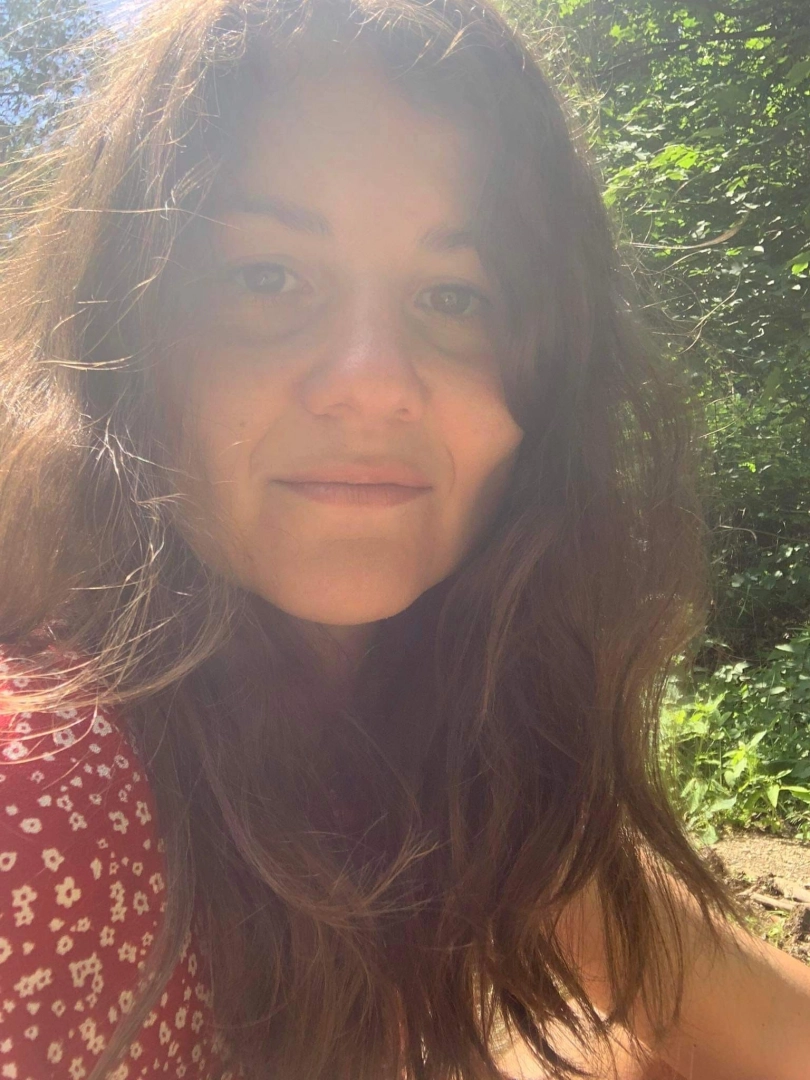„What does it mean to enter into the public space? When do we show ourselves as we truly are? Is our identity also not a form of performance?“ asks the artist behind a series of paintings focused on the topic of gymnastics.
Gymnastics for the health of the Arian race
Thenjiwe Niki Nkosi was born in New York to a Greek-American mother and a South African father. Both her parents were political activists fighting against white supremacy. After the end of the apartheid, the family moved to South Africa. There, Nkosi was drawn to the history of gymnastics: In the 30s’, a danish gymnast Niels Bukh apparently arrived in South Africa to promote this sport as “a means for improving the health of the Arian race”.
By the time Nkosi discovered these historical facts, American gymnastics were already dominated by black athletes like Simone Biles or Gabby Douglas. Also, Nkosi as an artist was becoming the centre of attention in her field.
She recalled a memory of a teacher who had issues with her colour: “He liked to point out the gaps in my knowledge of European art history, and finally said to me ‘you shouldn't even be here’.” Thenjiwe said it happened in front of the whole class. “I felt humiliated.” But this distress caused her to reach deep. “I used my anger as fuel, and what emerged was my first work confronting white supremacy.” ”In 2012 she found a picture of a gym on the internet which she painted, replacing the images of white girls with black. She returned to this straightforward concept even several years later.
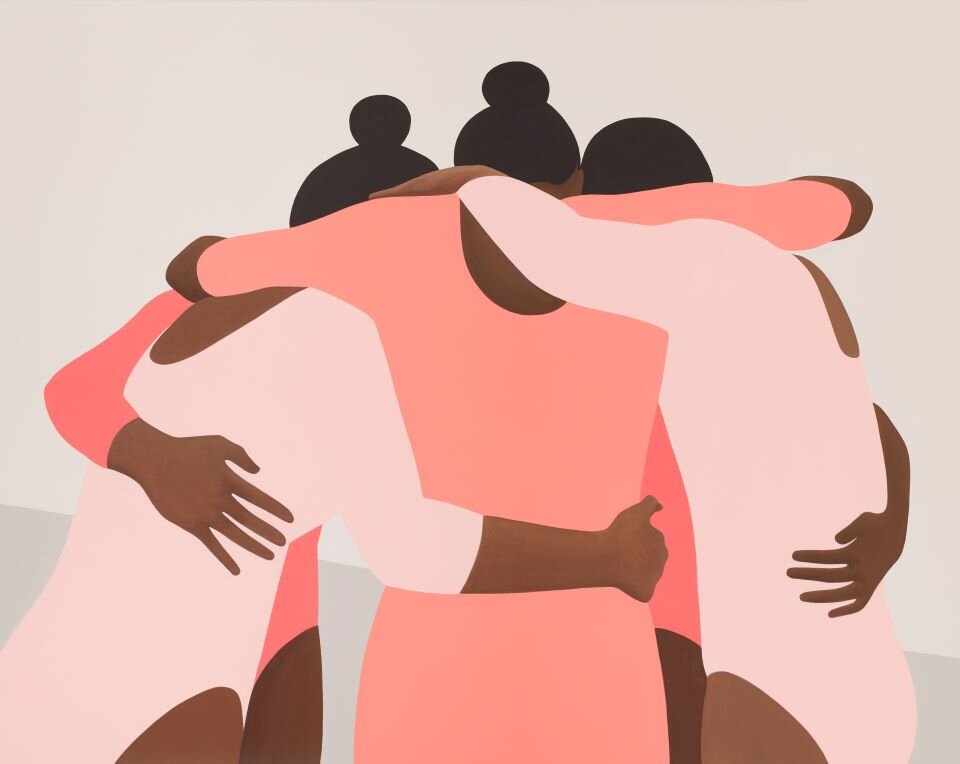
Apart from issues of race, her first exhibition also pointed out the parallels between the fates of artists and athletes. Rather than moments depicting the heights of success, she focused on the moments before a big victory (or loss) and also included the audience at the centre of attention: “Paintings from the Gymnasium exhibition varied from flowing figural compositions of gymnasts and umpires to wide spaces bordering on architectural abstraction. The figures are certainly not captured during peak athletic moments. They rather depict the moments preceding and following the movement or the results of failure. This way, the minutiae of athletic performance, which are usually overlooked by the audience, come to the forefront. The tension is depicted through suggestive signs instead of detailed micro portraits. Nkosi moves attention away from the moment of victory or defeat and highlights the topic of the humanity of the human-performer.”
.jpg)
Staying agile
She has also recorded a video for the exhibition where she compares close-ups of young black athletes from different times, in the moments right before starting their routine; eyes directed forward, hands and feet itching with excitement, quietly getting ready until it’s their turn. The audiovisual piece titled Suspension is accompanied by dramatic music and forms one of the base materials for the paintings. The gymnastics painting series also visibly examined the relationship between the group and the individual: “While the sports establishment, media and most viewers focus on the individual star - isolated and revered - gymnasts themselves understand the necessity of the team which is the foundation on which rest all “individual” performances and without which even the most talented gymnast could not succeed,” says Nkosi.
“I don’t consider myself to be primarily a painter, even though painting is a medium I have been focusing on the most in recent years. For me, it’s important to be able to work across disciplines and to stay agile,” says Nkosi. Through her works, she intentionally expresses her thoughts on identity and structures that defined the ideas of race and what it means to see oneself as a Black woman as well as a citizen of the world in these circumstances. She does so with honesty that is thankfully commonly accepted by contemporary society. She also does so with certainty that art is the right medium for the development of her process of exploring her identity: “I used to think that growing up means to definitively settle down in one identity. These days I think that it’s useful to realise that we always have the option to change. I consider art to be a good medium to formulate these changes.”
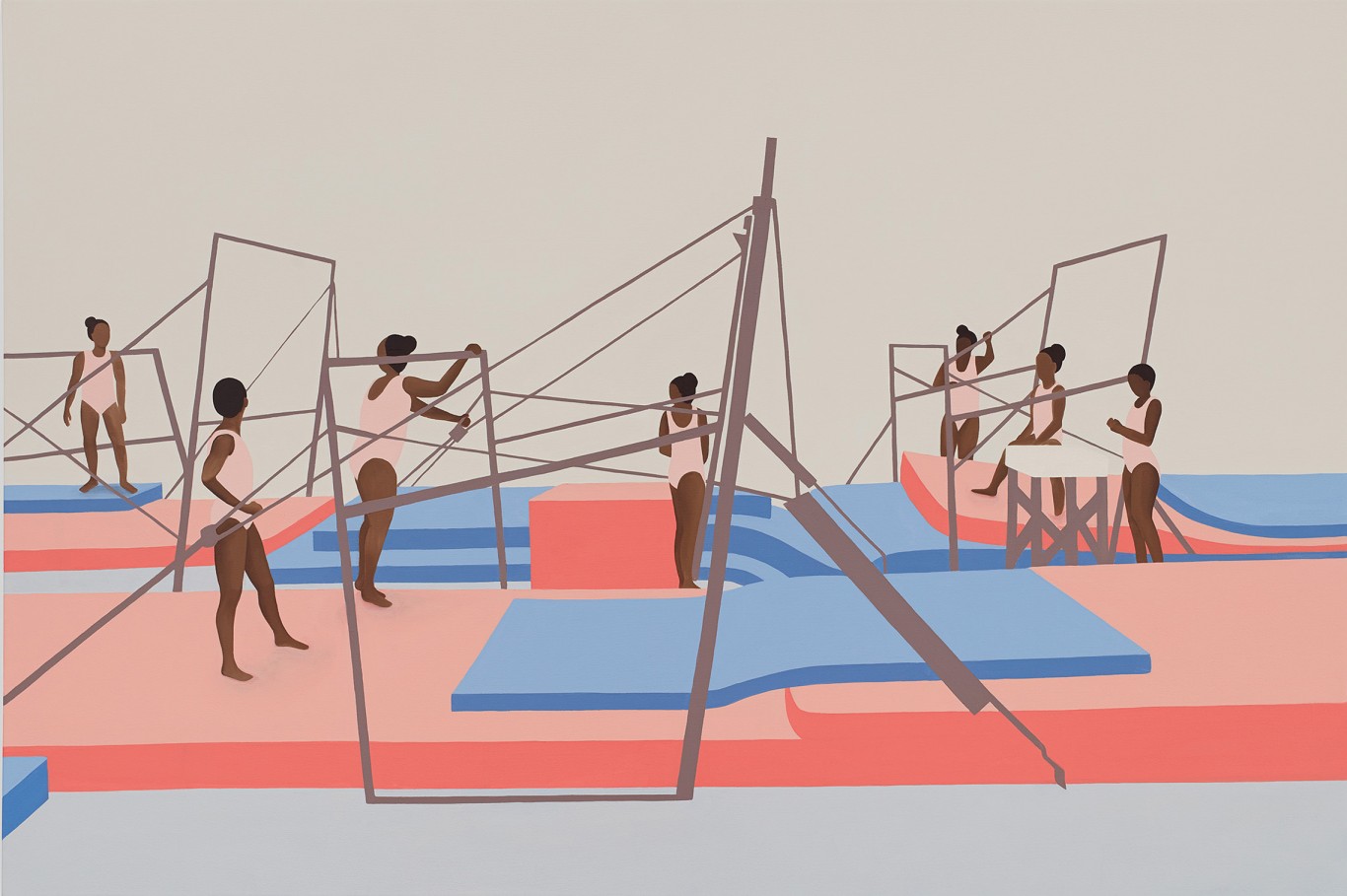
The Gymnasium exhibition was first realised on the order of The Africa Centre in New York – where it remained open from September 2019 until January 2020. After that, it moved into the Stevenson gallery in Johannesburg. In Thenjiwe Niki Nkosi’s career, this exhibition represents a watershed moment which drew attention towards her work not just on the home turf but also internationally.
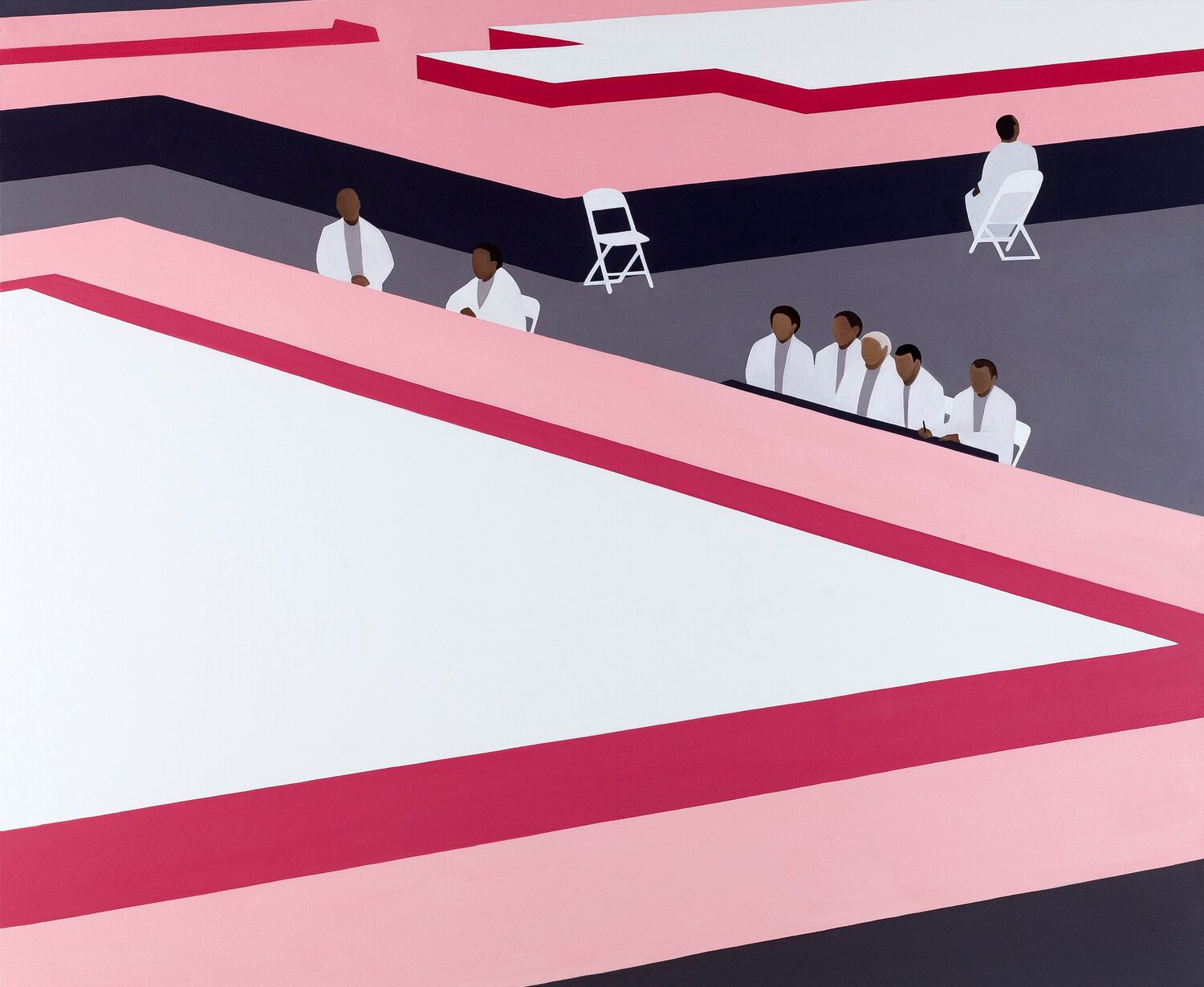
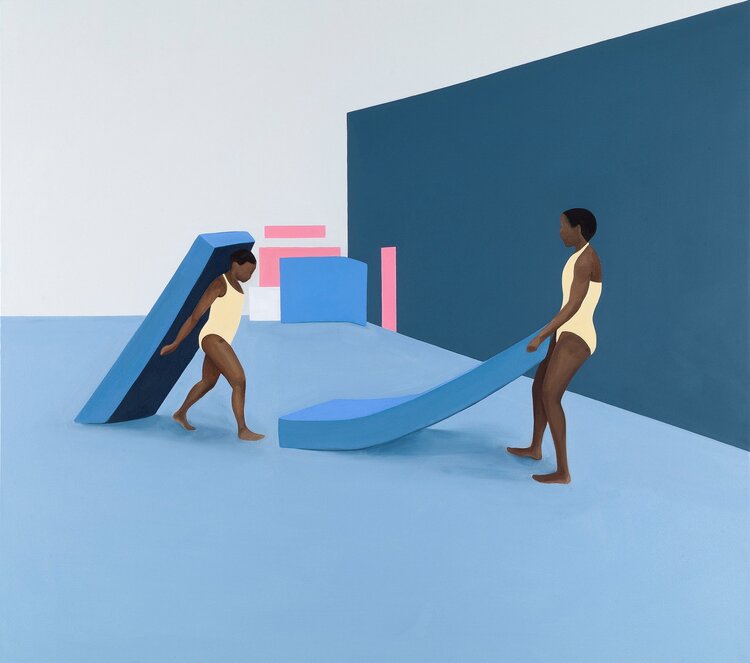
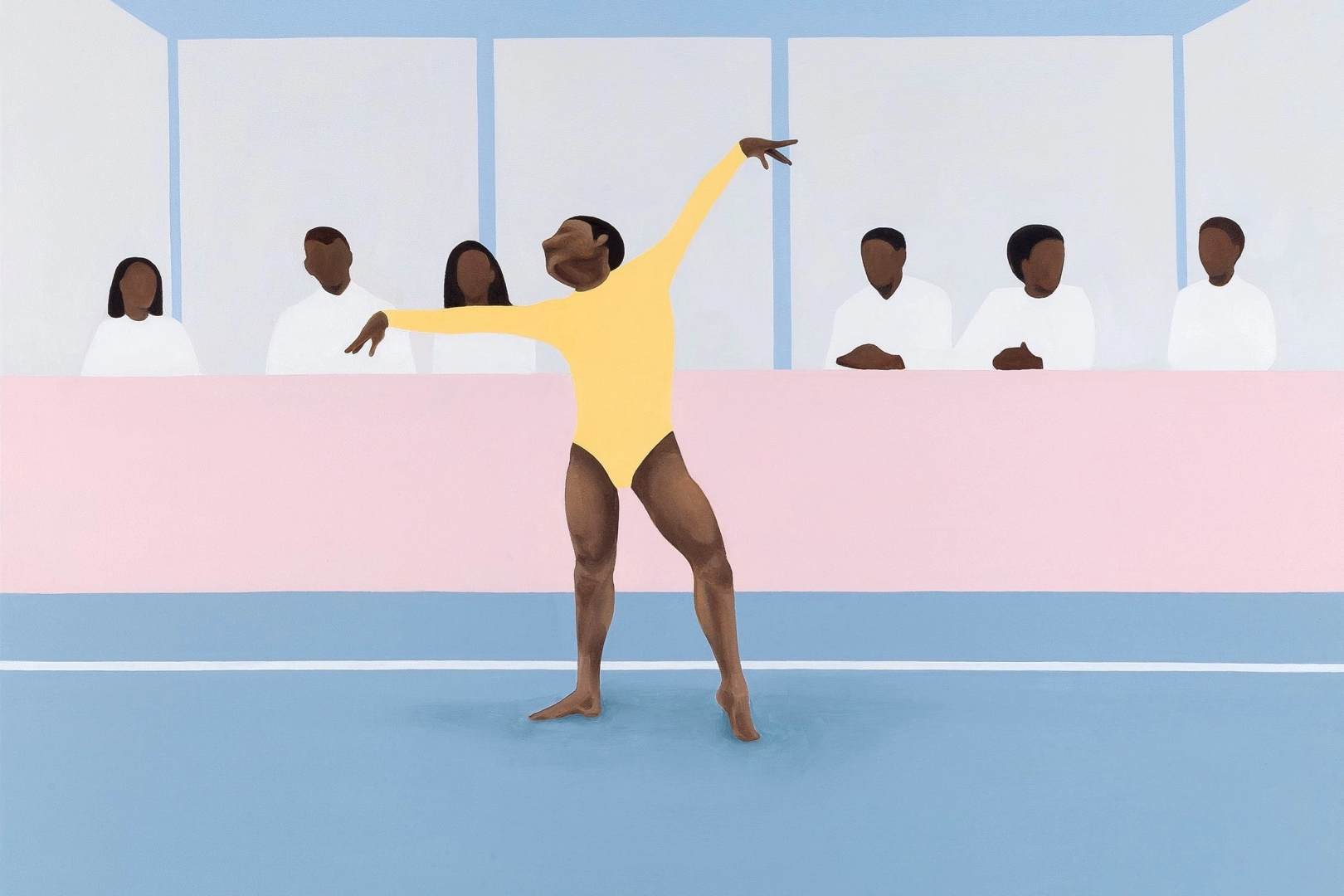
.jpg)
